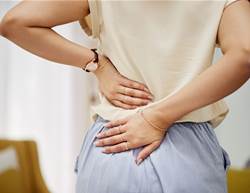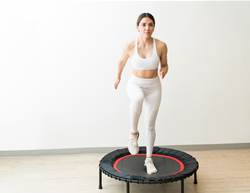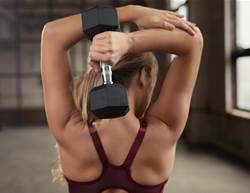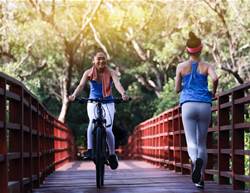Pilates has been around for over a century, and for good reason. Created by Joseph Pilates in the early 20th century, the method focuses on strengthening the core — including the abdominals and back — while also improving stability, balance, posture and flexibility, says certified Pilates instructor Liz Hilliard.
This low-impact workout can be done in several ways — on a reformer, yoga mat or even against a wall — and is easy to adapt based on your fitness level. Hilliard says Pilates at home is especially appealing because it doesn’t require heavy equipment or costly machines, making it more accessible.
Pilates can also be particularly beneficial during and after menopause. “Menopause accelerates muscle loss, decreases bone density and increases the risk of falls, but Pilates addresses these issues directly by building muscle strength and improving bone health,” says orthopaedic surgeon Dr Pamela Mehta. Engaging the deep core muscles also supports pelvic floor strength, which can help with menopause-related issues such as pelvic floor dysfunction, she adds.
If you have osteoporosis, arthritis or other pre-existing conditions, or are completely new to exercise, speak to your GP before starting any new fitness routine.
Keep reading for the benefits of Pilates — plus the seven best Pilates exercises to try at home.
Benefits of Pilates
Here are some of the key perks you can expect from a regular Pilates practice, according to the experts we spoke to.
May help reduce the risk of injury: Muscle strength and balance naturally decline with age, which can increase the risk of falls and injury if you don’t maintain them. While dedicated strength training is also an important part of a well-rounded fitness routine, regular Pilates helps improve balance and joint stability, even in older adults. Research published in Healthcare in 2023 found that Pilates supports and stabilises joints, making it a valuable addition to long-term injury prevention.
Can decrease stress: Exercise in general is known to boost mental health, but Pilates offers an extra layer of calm thanks to its focus on deep, mindful breathing, intentional movement and present-moment awareness, says Hilliard. Studies show that practising Pilates once a week can lower stress levels and help ease symptoms of anxiety and depression.
May improve pelvic floor function: “For women who have given birth or are going through menopause, Pilates is an excellent way to improve pelvic floor strength, which can help with urinary incontinence and sexual health,” says Dr Mehta. The emphasis on posture and core engagement helps stabilise the pelvic floor and reduces strain on surrounding muscles.
May help build full-body strength: Pilates is a low-impact, total-body workout that targets the abs, glutes, hamstrings, arms and back, Dr Mehta explains. Many moves are compound exercises, meaning they work several muscle groups at once. However, Dr Mehta notes that Pilates should complement — not replace — bone-loading strength training.
Is accessible to all levels: If you’re new to exercise, Pilates is a great place to start since it requires little to no equipment. It can also be easily modified or intensified depending on your goals and ability, Hilliard adds.
15-minute at-home Pilates workout
Try these moves three to four times a week. I have a background in weightlifting and resistance training, so I used 2 kg dumbbells for the squat to biceps curls and arm circles — but you can stick to bodyweight if you prefer.
The workout took about 15 minutes and was the perfect mid-afternoon pick-me-up. Each move required control and attention to form, keeping my core engaged throughout. My balance got a solid workout, and my quads were shaking after the final set of railroad tracks and leg lifts. Beginner-friendly? Yes. Easy? Not quite.
Time: 15 to 20 minutes
Equipment: Light dumbbells (optional)
Good for: Full-body strength and stability
Squat to biceps curl
“This is one of my favourite exercises because it works your entire body — legs, core, arms, shoulders and back,” Hilliard says. It’s also an excellent warm-up move as it gets your heart rate up and boosts circulation.
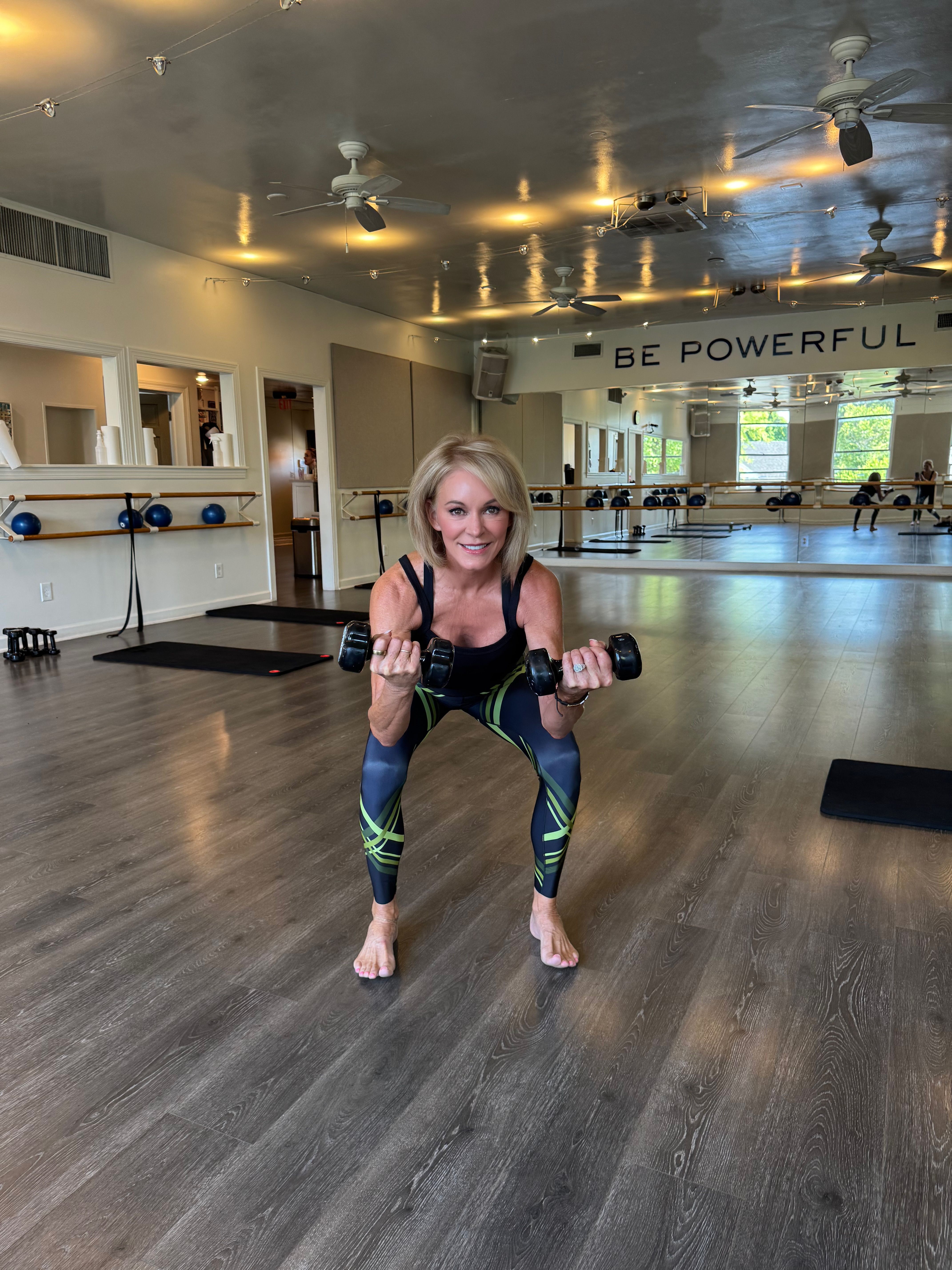
- Stand with your feet hip-width apart, holding light weights in each hand if you’re using them. You can also opt for a medium to heavy resistance band looped securely under your feet.
- Bend your knees into a squat, pushing your glutes back as if you’re sitting in a chair. Keep your core engaged as you return to standing, curling your arms so the weights move toward your shoulders in a biceps curl.
- Lower the weights slowly back to the starting position, fully extending your arms.
- That’s one rep. Aim for three sets of 10 to 15 reps.
Arm circles
Arm circles are worth adding to your routine. Hilliard says they strengthen posture and core stability while working the shoulder joint and the stabiliser muscles in the upper body.
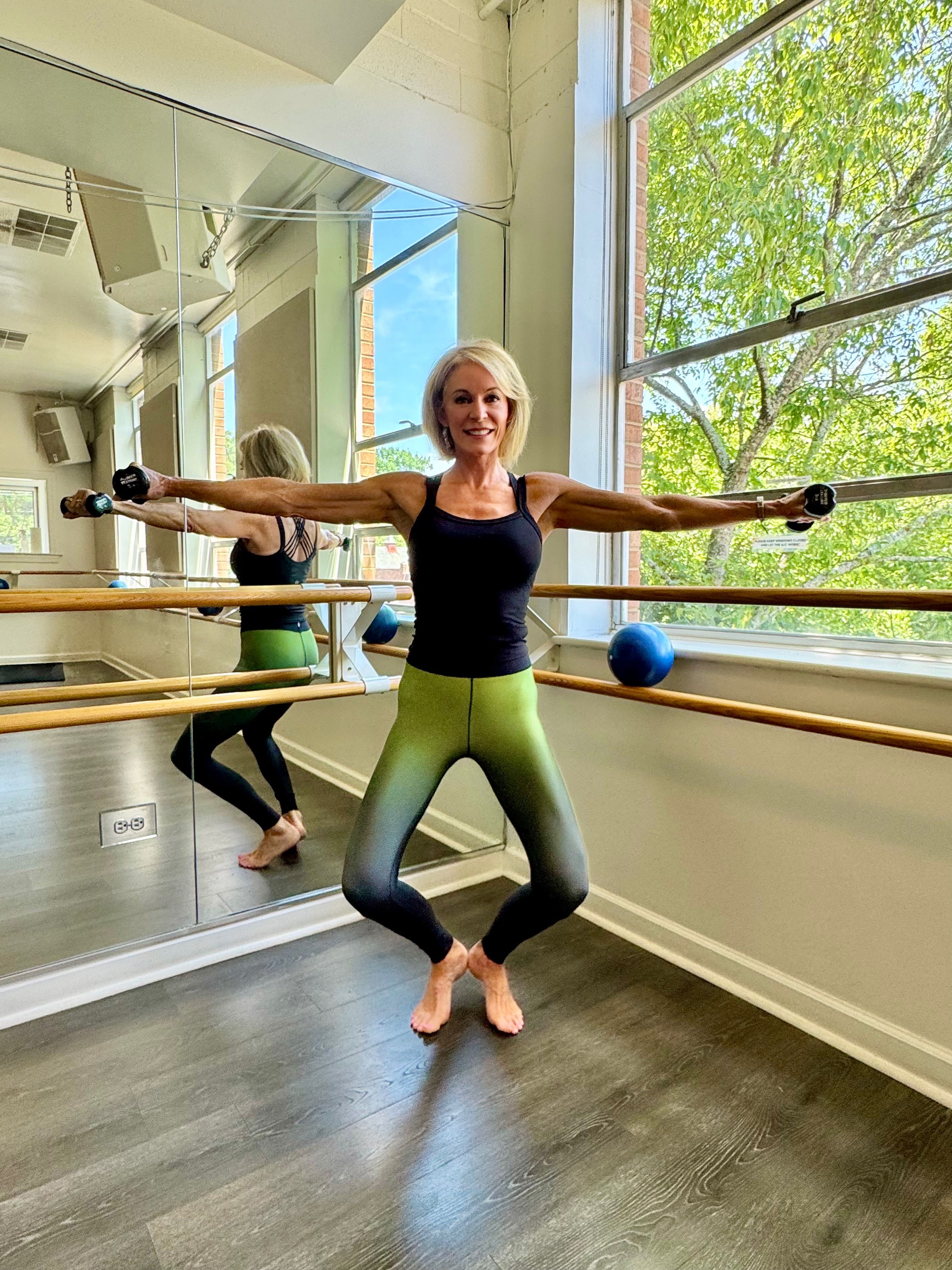
- Stand upright with your heels together and toes turned out slightly in a narrow V. For an extra balance challenge, lift your heels about five centimetres off the floor.
- Bend your knees and lower halfway toward the floor, keeping shoulders stacked over hips. Engage your quads and core to stay steady.
- Holding a light weight in each hand (optional), lift your arms out to the sides at shoulder height to form a T shape. With knuckles facing up and palms down, draw small circles about the size of a softball. Circle in one direction for 15 to 30 seconds, then reverse for the same amount of time.
- That’s one set. Complete three sets in total.
Triceps dips
Triceps dips are a bodyweight move that targets the back of your arms (triceps) while also firing up your shoulders, chest, and core as you stabilise.
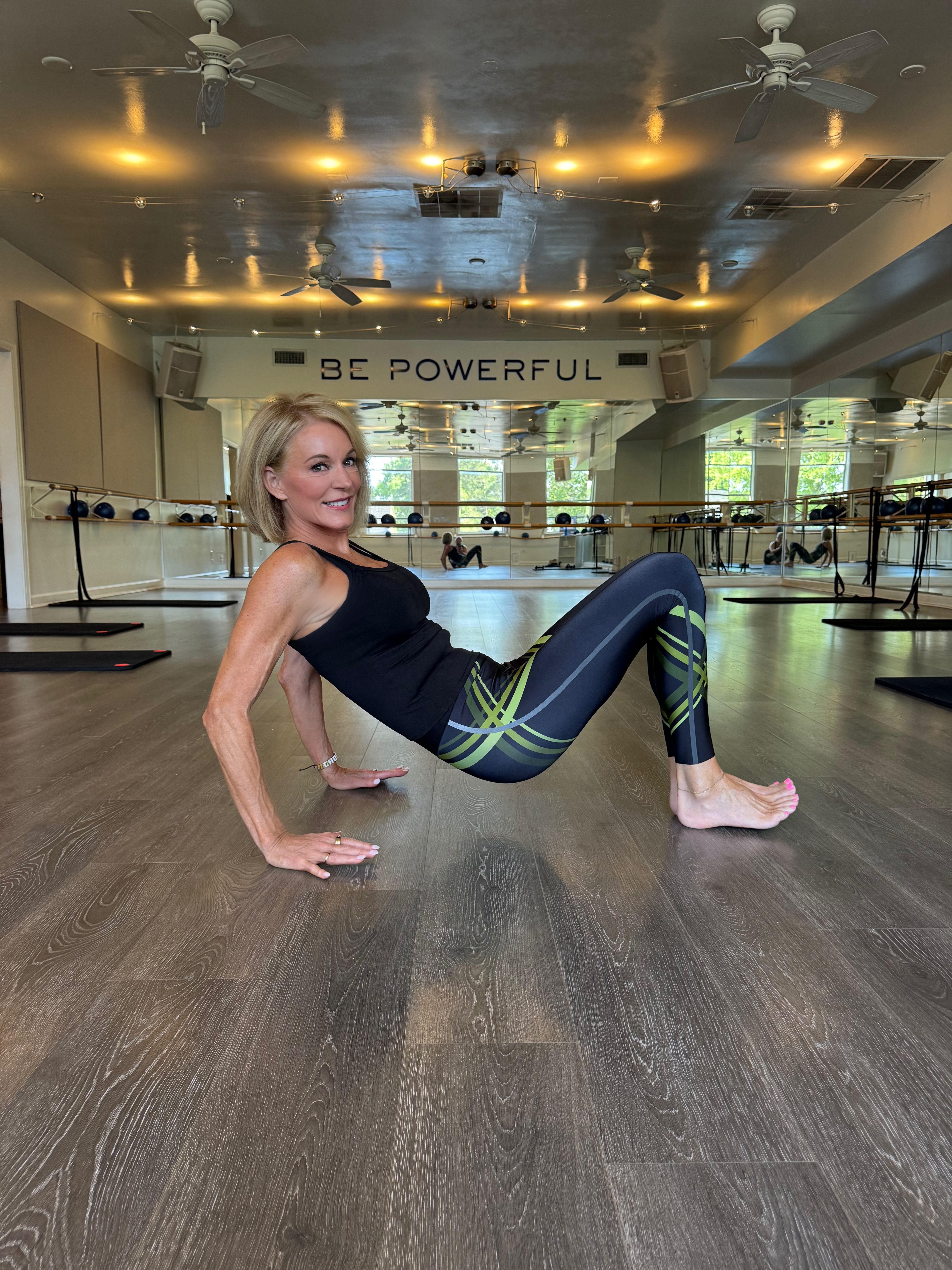
- Grip the front edge of a sturdy chair or bench with your hands.
- Hover your glutes just off and in front of the seat, keeping your arms straight, feet flat, and legs bent so your thighs are parallel to the floor.
- Engage your core as you lower towards the floor until your arms form a 90-degree angle.
- Squeeze your triceps, then press back up to the starting position.
- That’s one rep. Complete three sets of 10 to 15 reps.
Plank
A plank is one of the most effective moves for engaging your deep core, while also strengthening the quads, glutes, and back. The small stabilising muscles along your spine also get a workout, helping to improve posture.
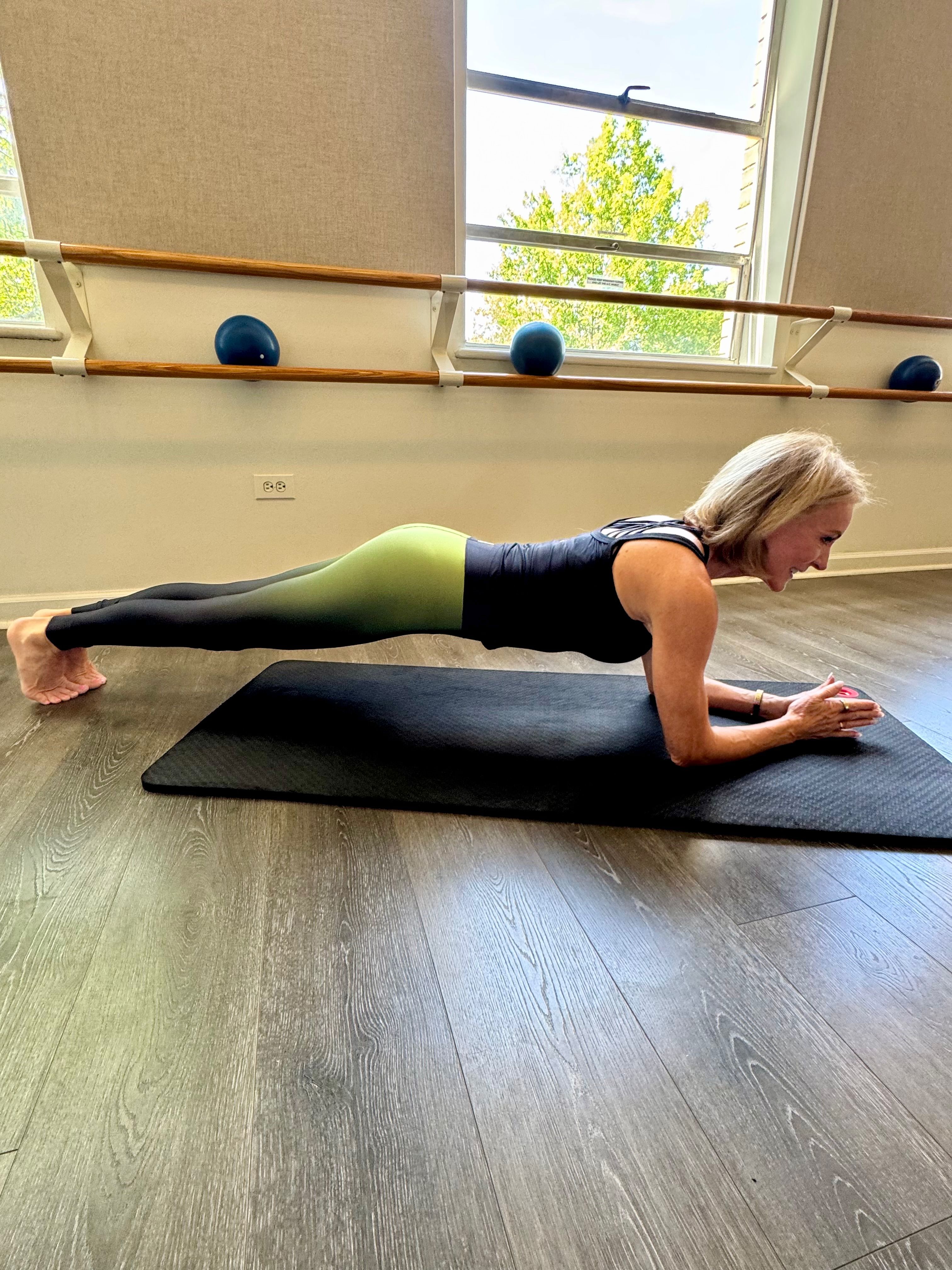
- Start on the floor with your hands under your shoulders and knees under your hips.
- Step your feet back one at a time, keeping your core engaged and drawing your belly button towards your spine.
- Maintain a straight line from the top of your head to your heels, with your gaze down.
- Hold for 30 to 60 seconds. Repeat for three sets.
Push-up
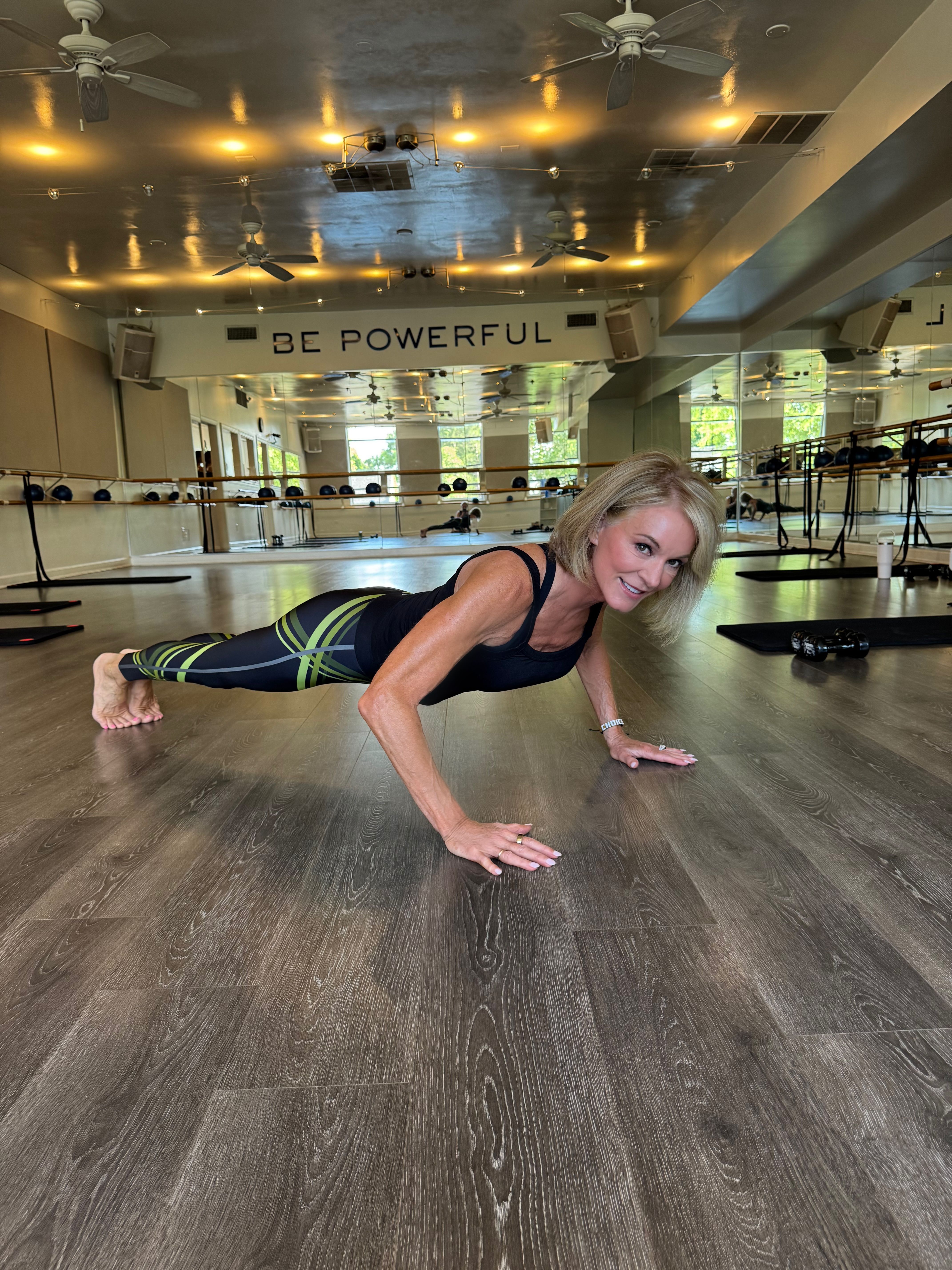
Push-ups are a signature strength move for good reason—they work the chest, back, shoulders, upper arms and core. They also support better posture by strengthening the muscles that help maintain proper alignment.
- Start in a high plank with your feet slightly wider than hip-width and your hands positioned just outside your chest.
- Engage your core and keep a neutral spine as you slowly lower your body, elbows angled slightly back rather than flaring to the sides.
- Press into your hands to return to the high plank.
- That’s one rep. Complete three sets of five to 10 reps.
Not ready for a full push-up? Modify by keeping your knees on the floor.
Parallel railroad track
This move targets balance and leg strength by engaging the small muscles from your ankles to your hips. It also trains stability to improve body control and lower your risk of injury.

- Stand upright with your feet parallel like railroad tracks, with hips stacked over knees and ankles.
- Place your hands on a steady surface and lift your heels by pressing into the balls of your feet. To progress, remove your hands.
- Keep your shoulders stacked over your hips as you bend your knees and push your tailbone towards your heels. Avoid lowering past knee level.
- Squeeze your thighs and slowly rise back up to straighten your legs.
- That’s one rep. Do three sets of 10 to 15 reps.
Forward fold leg lift
This classic Pilates move works the glutes, hamstrings and core, while balancing on three limbs challenges stability and coordination.
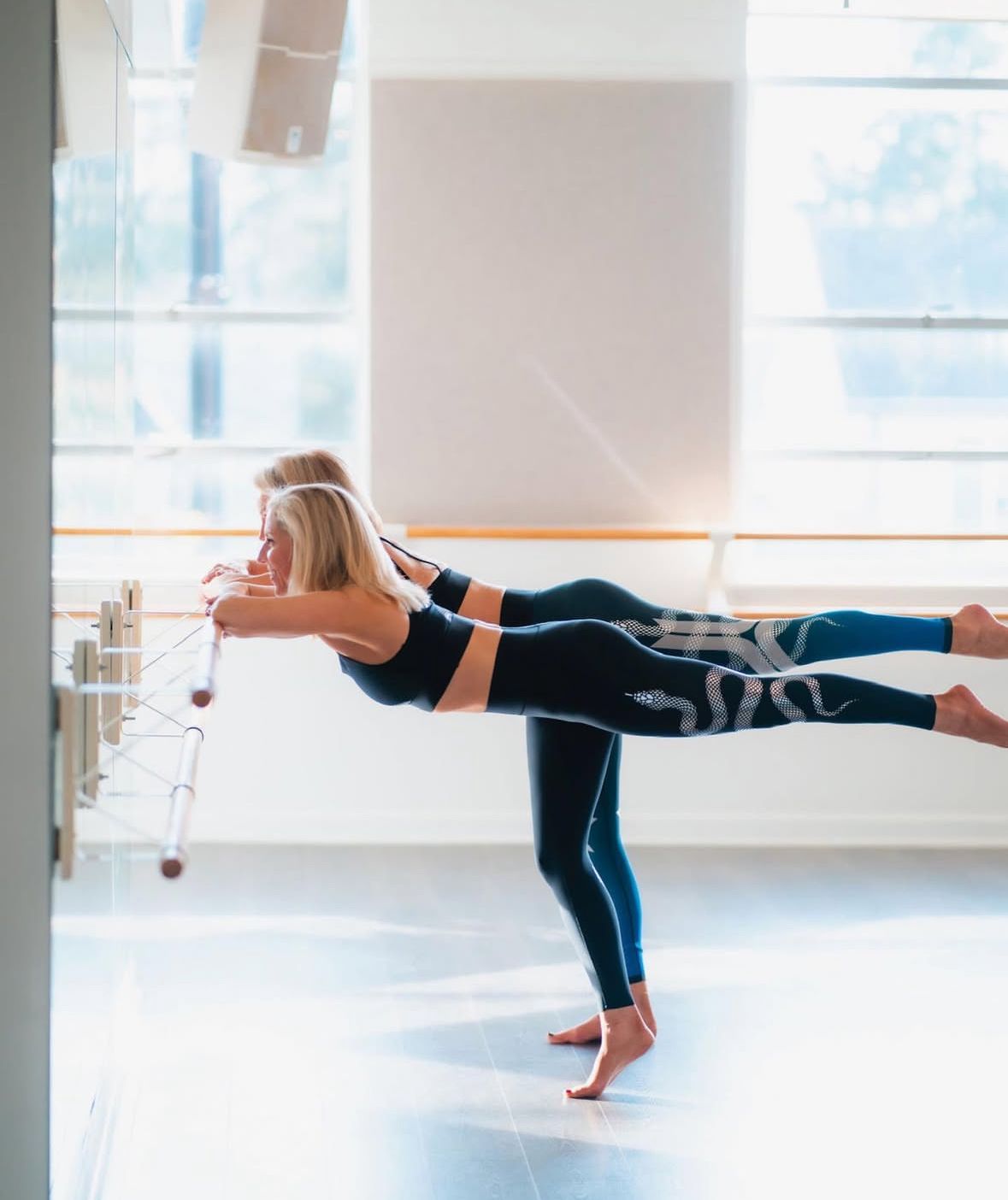
- From the parallel railroad track position, lower your heels to the floor and hinge forward at the hips over a steady surface.
- Bend your elbows, stacking your forearms, and rest your forehead on your arms while engaging your core.
- Keep your standing leg softly bent—not locked—and extend your opposite leg straight behind you.
- With a pointed toe, squeeze your glutes and lift your extended leg to hip height.
- With control, lower the leg until it taps the floor, then lift again.
- That’s one rep. Do three sets of 10 to 15 reps per side.
Pilates pro tips
As you start your Pilates journey, keep these expert pointers from Dr Mehta and Hilliard in mind.
- Warm up and cool down - Begin and end each session with gentle stretching and mobility work. Warming up improves range of motion and flexibility for the exercises ahead, while cooling down helps lower your heart rate and reduces post-workout soreness or stiffness.
- Cross-train for bone health - Pilates is excellent for building muscle tone but it doesn’t replace bone-loading strength training, Dr Mehta notes. Pair your Pilates sessions with resistance training—even light weights—and weight-bearing activities like brisk walking or hiking to help maintain bone density, especially after menopause.
- Plan your workouts with intention - Pilates focuses on strength and conditioning, so coupling it with heavy weightlifting or HIIT on the same day can overload your joints. Use Pilates as an active recovery day between more intense workouts, Dr Mehta suggests. It allows you to recover while still building strength and mobility.
Bottom line
At-home Pilates can deliver a quick, effective workout that boosts strength, reduces stress, and improves balance. For best results, make it part of a balanced fitness routine that also includes dedicated strength training.





